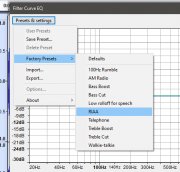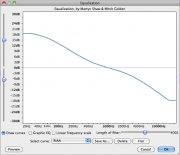MarkWComer
Veteran and General Yakker
- Joined
- Nov 1, 2014
- Messages
- 3,520
- Location
- Gaston, SC
- Tagline
- Victim of the record bug since age five
The only difference I can imagine would be less HF definition on the 45 and LP, but since I recorded the outer edge of the LP, the linear velocity of the groove would make the difference in stylus points moot. Even the 45 may not show much difference since that also has a higher linear velocity.I'd be curious of a repeat with the same stylus across the board, to remove that variable. Perhaps a spherical across the board? I'm wondering if the stylus to groove relationship is causing/altering dynamics...
I guess the real test of this was groove modulation- the shellac had lots more room on the disc face for a small playing time (compared to the other two) and the lacquer cutter made the best use of it.
My decision to use stylus 10 over D25M (1 mil spherical) was a last- minute snap. Can’t use anything else for the fat groove on the shellac…















